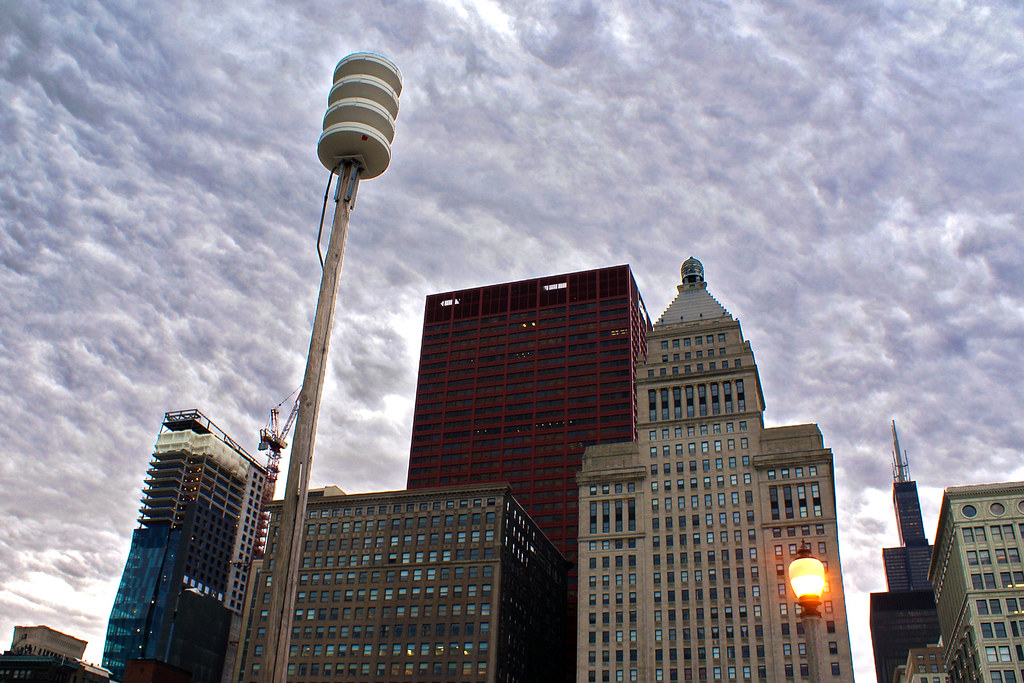Tornado downtown Chicago is a topic that evokes a mix of awe and concern, particularly for residents and visitors alike. Tornadoes, while relatively rare in urban environments, can have devastating effects when they do occur. Understanding the dynamics of tornadoes, especially in a bustling metropolis like Chicago, is crucial for safety and preparedness. In this article, we will explore the history of tornadoes in Chicago, the science behind their formation, the impact of tornadoes on downtown areas, and how residents can prepare effectively.
Throughout this article, we will delve into various aspects of tornadoes, including their frequency in Chicago, notable occurrences, safety measures, and the role of technology in tornado prediction. By the end, you will have a better understanding of how to navigate the risks associated with tornadoes in downtown Chicago.
Table of Contents
- History of Tornadoes in Chicago
- The Science Behind Tornado Formation
- Impact of Tornadoes on Downtown Areas
- Preparedness for Tornadoes
- Role of Technology in Tornado Prediction
- Notable Tornado Events in Chicago
- Safety Tips During a Tornado
- Conclusion
History of Tornadoes in Chicago
Understanding the history of tornadoes in Chicago provides context for their occurrence and impact. Tornadoes have been documented in the Chicago area since the 19th century. Here are some key events:
- The Chicago tornado of 1885, which caused significant damage and resulted in several fatalities.
- The 1920 tornado that swept through the city, destroying homes and businesses.
- The infamous tornado outbreak in 1956, which included a tornado that touched down in downtown Chicago.
These events highlight the potential for tornadoes to impact urban environments significantly. Despite the city's advancements in infrastructure and emergency response, the threat of tornadoes remains a concern.
The Science Behind Tornado Formation
Tornadoes are a complex natural phenomenon that requires specific atmospheric conditions to form. The primary ingredients for tornado formation include:
- Warm, moist air near the surface
- Cool, dry air aloft
- Wind shear, or changes in wind speed and direction with height
When these conditions align, they can lead to the development of supercell thunderstorms, which are capable of producing tornadoes. Understanding these scientific principles is vital for effective tornado prediction and preparedness.
Impact of Tornadoes on Downtown Areas
The impact of tornadoes on downtown areas can be catastrophic. High-rise buildings, densely populated neighborhoods, and critical infrastructure are all at risk during a tornado event. The consequences can include:
- Structural damage to buildings and homes
- Loss of life and injuries
- Disruption of essential services and transportation
Furthermore, the economic repercussions can be significant, with costs associated with rebuilding and recovery often running into millions of dollars.
Preparedness for Tornadoes
Preparedness is key to minimizing the impact of tornadoes in urban settings. Residents of downtown Chicago should take the following steps to ensure their safety:
- Stay informed about weather conditions through alerts and warnings.
- Identify safe locations within buildings, such as basements or interior rooms on the lowest floor.
- Create an emergency plan that includes communication strategies and meeting points.
By being proactive and prepared, individuals can significantly reduce their risk during a tornado event.
Role of Technology in Tornado Prediction
Advancements in technology have revolutionized tornado prediction and monitoring. Meteorologists now use:
- Doppler radar systems to track storm development
- Satellite imagery for real-time monitoring
- Computer models for predicting storm behavior
This technological progress allows for more accurate forecasts and timely warnings, giving residents a better chance to prepare for an impending tornado.
Notable Tornado Events in Chicago
Several notable tornado events have shaped the city's history and response strategies:
- The 1976 tornado outbreak, which affected the northern suburbs of Chicago.
- The infamous 2015 tornado that touched down near O'Hare International Airport.
- The 2021 tornado that caused significant damage in the southwest suburbs.
Each of these events has contributed to the ongoing conversation about tornado preparedness and response in urban centers.
Safety Tips During a Tornado
When a tornado warning is issued, it's crucial to follow safety protocols:
- Seek shelter immediately in a sturdy building.
- Avoid windows and doors.
- Protect your head and neck with your arms or a sturdy object.
Staying calm and following these guidelines can help save lives during a tornado.
Conclusion
Tornado downtown Chicago is a serious topic that requires awareness and preparedness. By understanding the history, science, and safety measures surrounding tornadoes, residents can better equip themselves to face these potential threats. We encourage readers to share their thoughts, experiences, or questions in the comments section below. Additionally, consider sharing this article with friends and family to raise awareness about tornado safety in urban environments. For further reading, explore our other articles on weather preparedness and safety tips.
References
- National Weather Service: Tornado Safety Tips
- Chicago Historical Society: Tornado History in Chicago
- American Meteorological Society: Understanding Tornadoes
Star Hobson: A Tragic Tale Of A Young Life Lost
Exploring The Allure And Impact Of Short Skirt Walking: A Cultural Perspective
Exploring Bonnie Tyler's Feet: A Closer Look At The Iconic Singer's Journey


